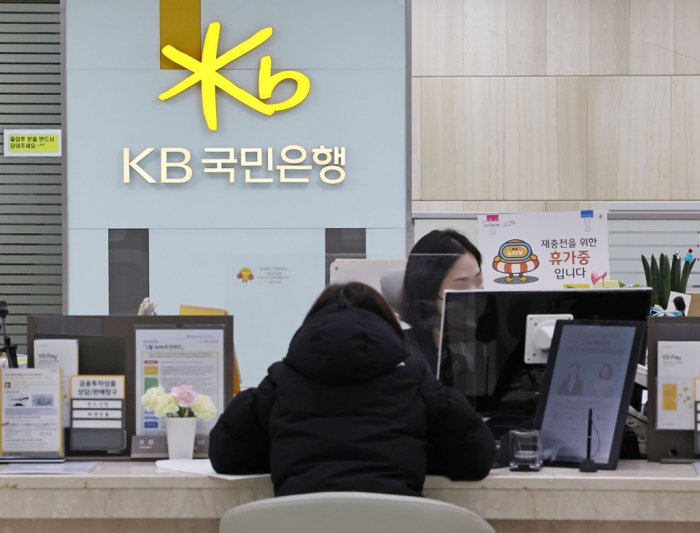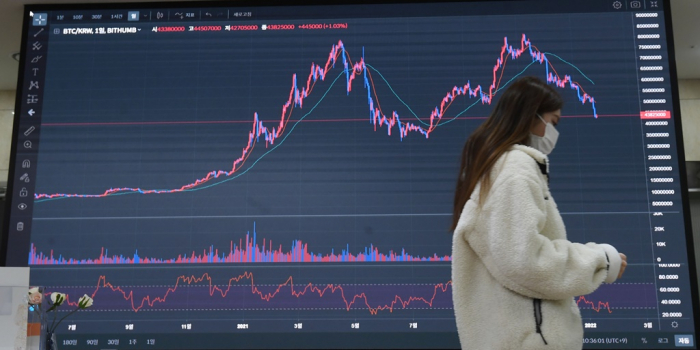Banking & Finance
Money flows rush to safer assets in Korea
Growth in total bank deposits up 1.9% in Jan on-month, nearly double the usual increase; MMFs, CMAs jump
By Feb 07, 2022 (Gmt+09:00)
3
Min read
Most Read
LG Chem to sell water filter business to Glenwood PE for $692 million


Kyobo Life poised to buy Japan’s SBI Group-owned savings bank


KT&G eyes overseas M&A after rejecting activist fund's offer


StockX in merger talks with Naver’s online reseller Kream


Mirae Asset to be named Korea Post’s core real estate fund operator



South Koreans are continuing their rush to safer assets with the balance of bank deposits, money market funds (MMFs) and cash management accounts (CMAs) up more than $48 billion in January.
Investor sentiment quickly soured as more aggressive-than-expected US monetary policy tightening dampened global stocks and cryptocurrencies.
“Money is moving out of risky assets to bank deposits as global monetary authorities speed up tightening,” said Hwang Sei-woon, senior researcher at Korea Capital Market Institute. “Investors may continue to favor safe assets for the time being.”
SAFETY IS TOP PRIORITY
The total deposits in the won currency at South Korea’s five largest lenders – Kookmin, Shinhan, Hana, Woori and NongHyup – stood at 1,788.6 trillion won ($1.5 trillion) as of end-January, up 34.2 trillion won, or 1.9%, from the previous month, according to industry sources on Sunday. The total deposits, which include time and demand deposits, as well as issuances of bank debentures, net issuances of certificates of deposit (CDs) and sales of repurchase agreements (RPs), usually rise or fall 1% on a monthly basis.
In January, term deposits jumped 11.8 trillion won, while demand deposits soared 9.1 trillion won.
South Koreans poured money into term deposits as predictions of a faster-than-expected US interest rate hike slammed global stock markets and South Korean banks increased rates after the country’s monetary authority ramped up the base rate to a pre-pandemic level last month.
The balance of demanding deposits also surged, indicating more investors were reluctant to return to riskier assets such as stocks and cryptocurrencies, banking sources said.
“Rising demand deposits mean financial customers avoid new investments while growing term deposits suggest more investors forgo higher returns,” said a local bank source.

Investors also parked more money in MMFs – financial products investing in short-term safe assets such as treasury bonds or corporate debts – and CMAs, a form of savings accounts. The balance of MMFs rose 22 trillion won to 158 trillion won in January and the balance of CMAs grew 4 trillion won to 69 trillion won.
SAVINGS BANKS
Term deposits of local savings banks attracted more customers as they offered as much as 1 percentage point higher interest rates than major lenders with time deposits at the smaller institutions sold out right after their launches.
The balance of deposits of domestic savings banks surged 31% to 96.8 trillion won in November 2021 from a year earlier.
“The recent weakness in stocks, cryptocurrencies, property markets spurred customers to flock into savings banks for higher returns from deposits,” said an industry source, adding growth in deposits at savings banks is faster than growth at major lenders.
But some savings banks cut interest rates for deposits since tighter household lending rules prevented them from expanding loans despite surging deposits.
Saving banks will be unable to provide loans even as they accumulate money from deposits due to the regulations, sources said.
“We need to make profits from interest rates on loans or investments, but it is hard to manage funds,” said another industry source. “The declining property market has also made it tough to earn money from the project financing market.”
Write to Dae-Hun Kim and In-Hyeok Lee at daepun@hankyung.com
Jongwoo Cheon edited this article.
More to Read
-

-
 Central bankingBOK restores interest rates to pre-pandemic level
Central bankingBOK restores interest rates to pre-pandemic levelJan 14, 2022 (Gmt+09:00)
3 Min read -
 Banking & FinanceMoney moves back to safe assets in Korea amid rising interest rates
Banking & FinanceMoney moves back to safe assets in Korea amid rising interest ratesDec 20, 2021 (Gmt+09:00)
3 Min read -
 Household loansMortgage loan growth slows to near four-year low in November
Household loansMortgage loan growth slows to near four-year low in NovemberDec 09, 2021 (Gmt+09:00)
2 Min read
Comment 0
LOG IN


